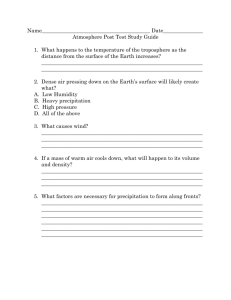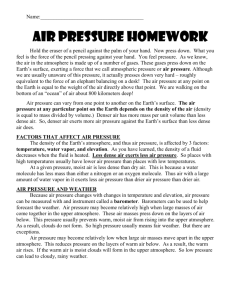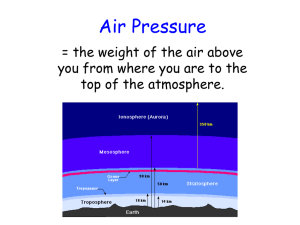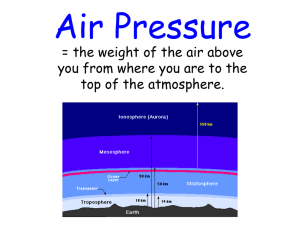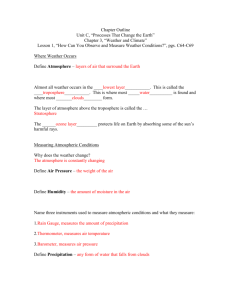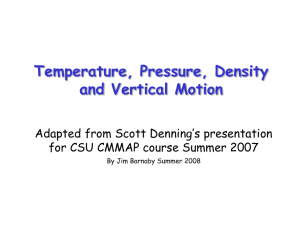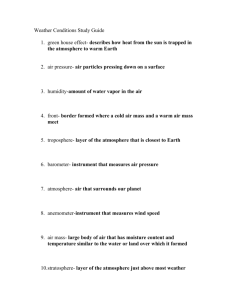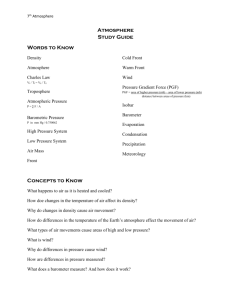Student Resource Sheet IHA - 11 How Air Pressure Affects Weather
advertisement
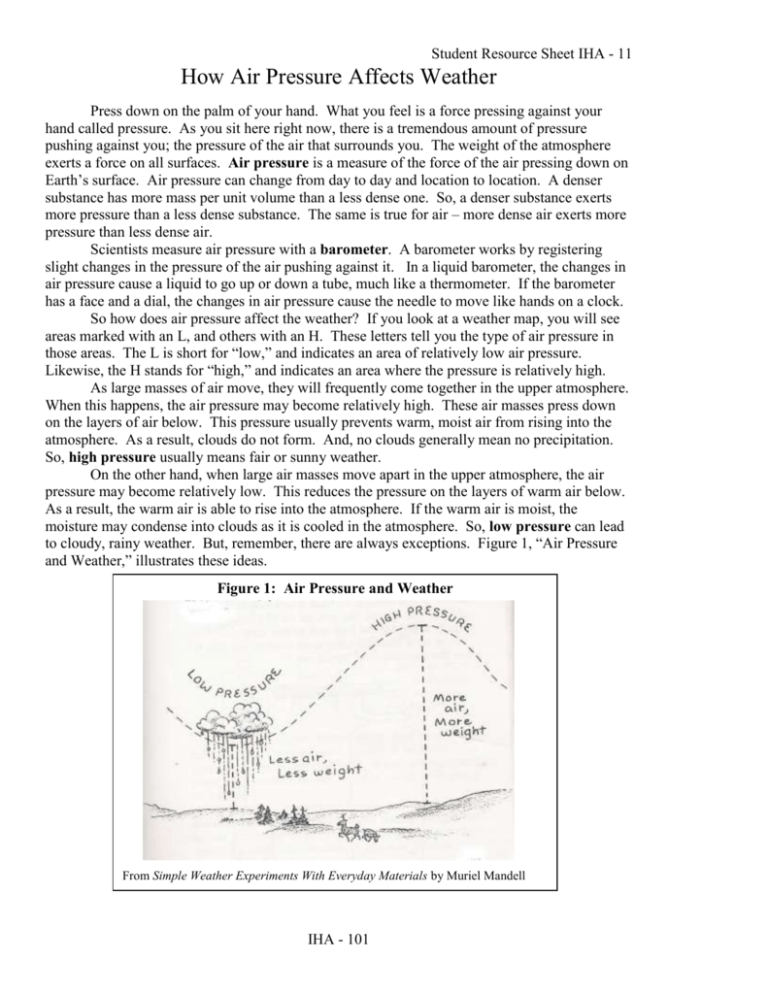
Student Resource Sheet IHA - 11 How Air Pressure Affects Weather Press down on the palm of your hand. What you feel is a force pressing against your hand called pressure. As you sit here right now, there is a tremendous amount of pressure pushing against you; the pressure of the air that surrounds you. The weight of the atmosphere exerts a force on all surfaces. Air pressure is a measure of the force of the air pressing down on Earth’s surface. Air pressure can change from day to day and location to location. A denser substance has more mass per unit volume than a less dense one. So, a denser substance exerts more pressure than a less dense substance. The same is true for air – more dense air exerts more pressure than less dense air. Scientists measure air pressure with a barometer. A barometer works by registering slight changes in the pressure of the air pushing against it. In a liquid barometer, the changes in air pressure cause a liquid to go up or down a tube, much like a thermometer. If the barometer has a face and a dial, the changes in air pressure cause the needle to move like hands on a clock. So how does air pressure affect the weather? If you look at a weather map, you will see areas marked with an L, and others with an H. These letters tell you the type of air pressure in those areas. The L is short for “low,” and indicates an area of relatively low air pressure. Likewise, the H stands for “high,” and indicates an area where the pressure is relatively high. As large masses of air move, they will frequently come together in the upper atmosphere. When this happens, the air pressure may become relatively high. These air masses press down on the layers of air below. This pressure usually prevents warm, moist air from rising into the atmosphere. As a result, clouds do not form. And, no clouds generally mean no precipitation. So, high pressure usually means fair or sunny weather. On the other hand, when large air masses move apart in the upper atmosphere, the air pressure may become relatively low. This reduces the pressure on the layers of warm air below. As a result, the warm air is able to rise into the atmosphere. If the warm air is moist, the moisture may condense into clouds as it is cooled in the atmosphere. So, low pressure can lead to cloudy, rainy weather. But, remember, there are always exceptions. Figure 1, “Air Pressure and Weather,” illustrates these ideas. Figure 1: Air Pressure and Weather From Simple Weather Experiments With Everyday Materials by Muriel Mandell IHA - 101

